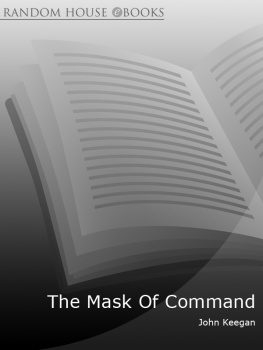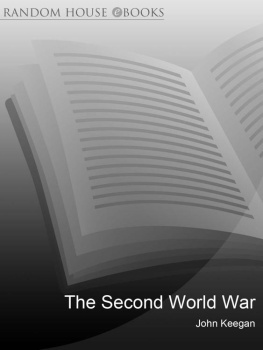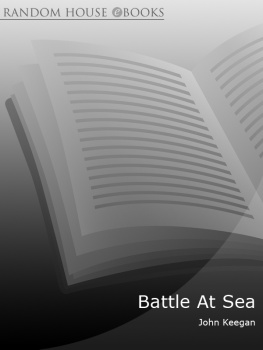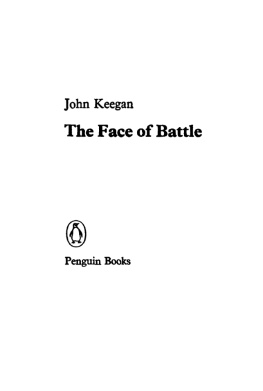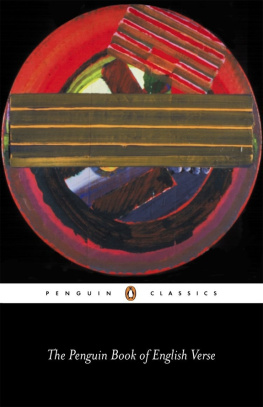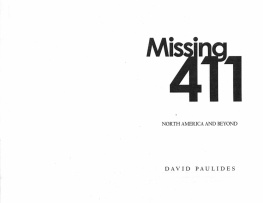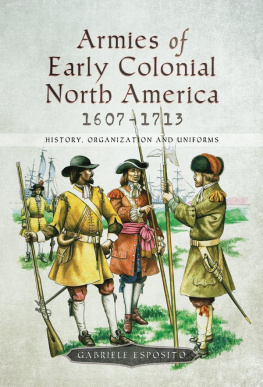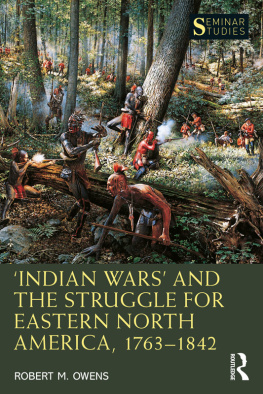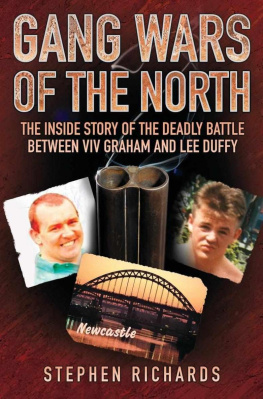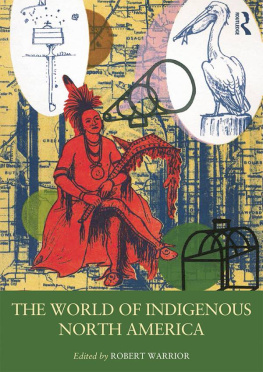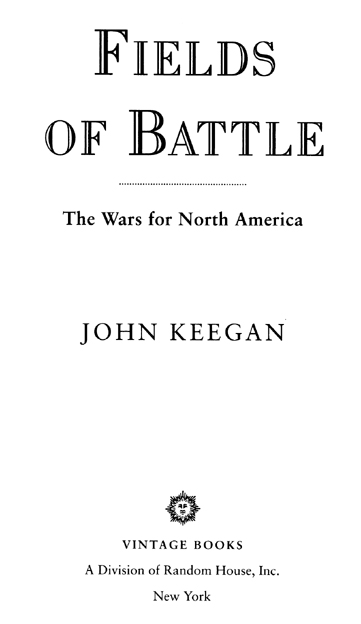Acclaim for
JOHN KEEGANs
F IELDS OF B ATTLE
A gracious book, artful and filled with surprises. It reaffirms, in a moment of national self-doubt, the enduring strengths of American culture.
The New York Times Book Review
He has the knack of combining scholarly discipline with passion and assertive judgments. Highly engaging.
Wall Street Journal
An extended love letter to the United States enhanced by Keegans sharp eye for terrain.
Cleveland Plain Dealer
A warm and wise and witty volume that offers delight as well as instruction. To say that the author writes well is to say that Robert E. Lee was a skilled commander.
Baltimore Sun
The dreams that fueled three centuries of contention over who was to rule the North American continent are outlined brilliantly. Keegan reveals geography as destiny, the beautifully described coastlines, rivers, valleys, forests, mountain ranges and wide open spaces of the continent becoming every bit as important to the story as the generals and the armies who bled and died within it.
Washington Post
Also by JOHN KEEGAN
The Face of Battle
Soldiers: A History of Men in Battle
(with Richard Holmes)
The Mask of Command
The Second World War
The Price of Admiralty
Whos Who in Military History
(with Andrew Wheatcroft)
Churchills Generals
Six Armies in Normandy
Battle at Sea
A History of Warfare
The Battle for History
JOHN KEEGAN
F IELDS OF B ATTLE
John Keegan is one of the worlds most distinguished historians and the author of many acclaimed books, including, most recently, A History of Warfare and The Battle for History. He has been a Fellow at Princeton University, was for many years senior lecturer in military history at the Royal Military Academy, Sandhurst, and is now defense correspondent for the Daily Telegraph in London.
FIRST VINTAGE BOOKS EDITION, JUNE 1997
Copyright 1995 by John Keegan
All rights reserved under International and Pan-American Copyright Conventions. Published in the United States by Vintage Books, a division of Random House, Inc., New York. Originally published in Great Britain in hardcover in 1995 by Hodder and Stoughton, London, as Warpaths: Travels of a Military Historian in North America. Subsequently published in the United States in hardcover by Alfred A. Knopf, Inc., New York, in 1996.
Portions of this work were originally published in American Heritage, MHQ: The Quarterly Journal of Military History, and The Yale Review.
Library of Congress Cataloging-in-Publication Data
Keegan, John, 1934
[Warpaths]
Fields of battle : the wars for North America / John Keegan.1st Vintage Books ed.
p. cm.
Originally published: Warpaths. London : Hodder and Stoughton, 1995.
eISBN: 978-0-307-82858-3
1. North AmericaHistory, Military. 2. BattlesNorth AmericaHistory. 3. Keegan, John, 1934JourneysNorth America.
I. Title.
[E46.5.K44 1997]
970dc21 96-46868
Random House Web address: http://www.randomhouse.com/
v3.1
To Brooks and Lucy
The perfect Anglo-American marriage
Contents
Maps
Illustrations
QUEBEC
Samuel de Champlain in battle with the Iroquois (Peter Newarks Western Americana)
French Canadian habitant on snowshoes, 1722 (Peter Newarks Western Americana)
Samuel de Champlain, founder of New France (Mansell Collection)
Montcalm, Wolfes opponent at the Plains of Abraham (Mansell Collection)
Montcalm and his troops celebrating victory at Ticonderoga, 8 July 1758 (National Army Museum)
Wolfe and his troops scaling the cliffs to the Plains of Abraham, 1759 (Mansell Collection)
The Plains of Abraham today (J. Allen Cash)
Quebec in 1730 (Peter Newarks Western Americana)
Wolfes landing, 13 September 1759 (British Museum)
The Death of Wolfe by Edward Penny, 1763 (Ashmolean Museum)
The Quebec theatre of operations and plan of battle (Peter Newarks Western Americana)
YORKTOWN
George Washington in later life (Peter Newarks Western Americana)
West Point on the Hudson (Peter Newarks Western Americana)
Cornwallis (Mansell Collection)
Bougainville, present at Quebec, 1759, and Yorktown, 1781 (Mansell Collection)
The surrender of Yorktown by Cornwallis to Washington, 1781 (Yale University Art Gallery)
PENINSULA
Richmond, the capital of the Confederacy, 1861 (Mansell Collection)
McClellan (Peter Newarks Western Americana)
Robert E. Lee, after the Confederacys defeat, 1865 (Peter Newarks Western Americana)
The Battle of Williamsburg (Peter Newarks Western Americana)
Stonewall Jackson (Peter Newarks Western Americana)
The Battle of Malvern Hill (Mansell Collection)
The Union retreat to Harrisons Landing (Library of Congress)
McClellan faces Lincoln, after the failure of the Peninsular campaign, October 1862 (Peter Newarks Western Americana)
The ruins of Richmond in 1865 (Mansell Collection)
The Virginia State Capitol today (Sarah Bird Wright)
LITTLE BIGHORN
Plains Indian hunting buffalo, by George Catlin (Peter Newarks Western Americana)
Indians catching wild horses, by George Catlin (Peter Newarks Western Americana)
Cheyenne village on the Great Plains, c. 1870 (Peter Newarks Western Americana)
Custer in the uniform of his own design (Peter Newarks Western Americana)
Sitting Bull, chief of the Hunkpapa Sioux (Peter Newarks Western Americana)
Custer with his Crow Indian scouts before the Battle of Little Bighorn, 1876 (Peter Newarks Western Americana)
Otto Beckers reconstruction of Custers Last Stand (Peter Newarks Western Americana)
New York World, 6 July 1876 (Peter Newarks Western Americana)
Temporary graves on the Little Bighorn battlefield (Peter Newarks Western Americana)
Acknowledgements
The United States and Canada are countries of warm hospitality and ready friendship, of which I have experienced so much over the decades that I risk giving offence in the list that follows through sheer forgetfulness. I beg forgiveness from all whose names are not there but should be.
In rough chronology I should like to remember first Major Robert E. Gray, U.S. Corps of Engineers, of Dayton, Ohio, my younger sisters godfather, now deceased, the first American of whom I have memory. He was one of those who came to Britain in 1943 to fight for the liberation of Europe, and I honour him as a representative of his brave comrades. Next my American Oxford friends, mostly Rhodes scholars, Frank Sieverts, Paul Sarbanes (now U.S. Senator for Maryland), Paul Sheats, Bob Collins, Tom Brown, David Chandler, John Sears, Keith Highet, Bill Carmichael, and Eliot Hawkins, and the Canadians, Roger Bull, John Lewis, and Ian Macdonald. I remember with deep gratitude Bill Coolidge, founder of the Balliol Pathfinder scheme, whose generosity made possible my first visit to the United States.


